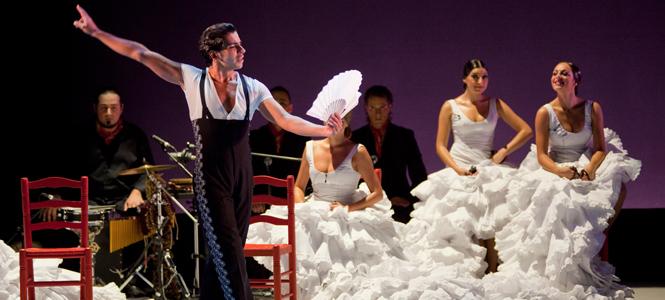The curtain is raised and a single beam of light spills over Carlos Rodríguez, a member of the renowned flamenco dance group Gala Flamenca. He moves his hands towards the light and suddenly clicks his heels across the floor like the finger-snapping of a beat poet. There is a sharp progression, the tapping elevates to a climax and then silence ensues once again.
As the story unfolded, the clapping and singing embroidered into the rhythm of the guitar. The vocals of Rocío Bázan, Antonio Campos and Ismael de la Rosa channeled the pulse of flamenco across the stage. Meanwhile, Jesús Carmona churned out a complex pattern of foot stomping as musicians circled around him. This illustrated the traditional roots of flamenco which was traditionally a close-knit community gathering rather than a formal performing art.
Three women emerged in traditional red flamenco dresses with long ruffled tails elegantly trailing behind them. Their black hair was slicked into a bun and adorned with a flower. They glided across the stage and burst into a vibrant mix of cascading dresses, arching their backs and using hand-held fans to emphasize their wrist movements.
Audience members interacted with performers by shouting “Olé!” — a term used to indicate approval and a strong emotional connection with the dance.
Karime Amaya took the performance to another level as she lifted her dress to her knees during her solo and clicked her heels at a shattering speed. Her clips begin to fall out and her hair begins to unravel, but she didn’t pause. Instead, she continued her segment with an intense vigor and footwork that brought the performance to its peak.
It is believed that the ability to dance the flamenco is something you are born with and the only way to understand this is to see the poetry and soul of the dance in action.






